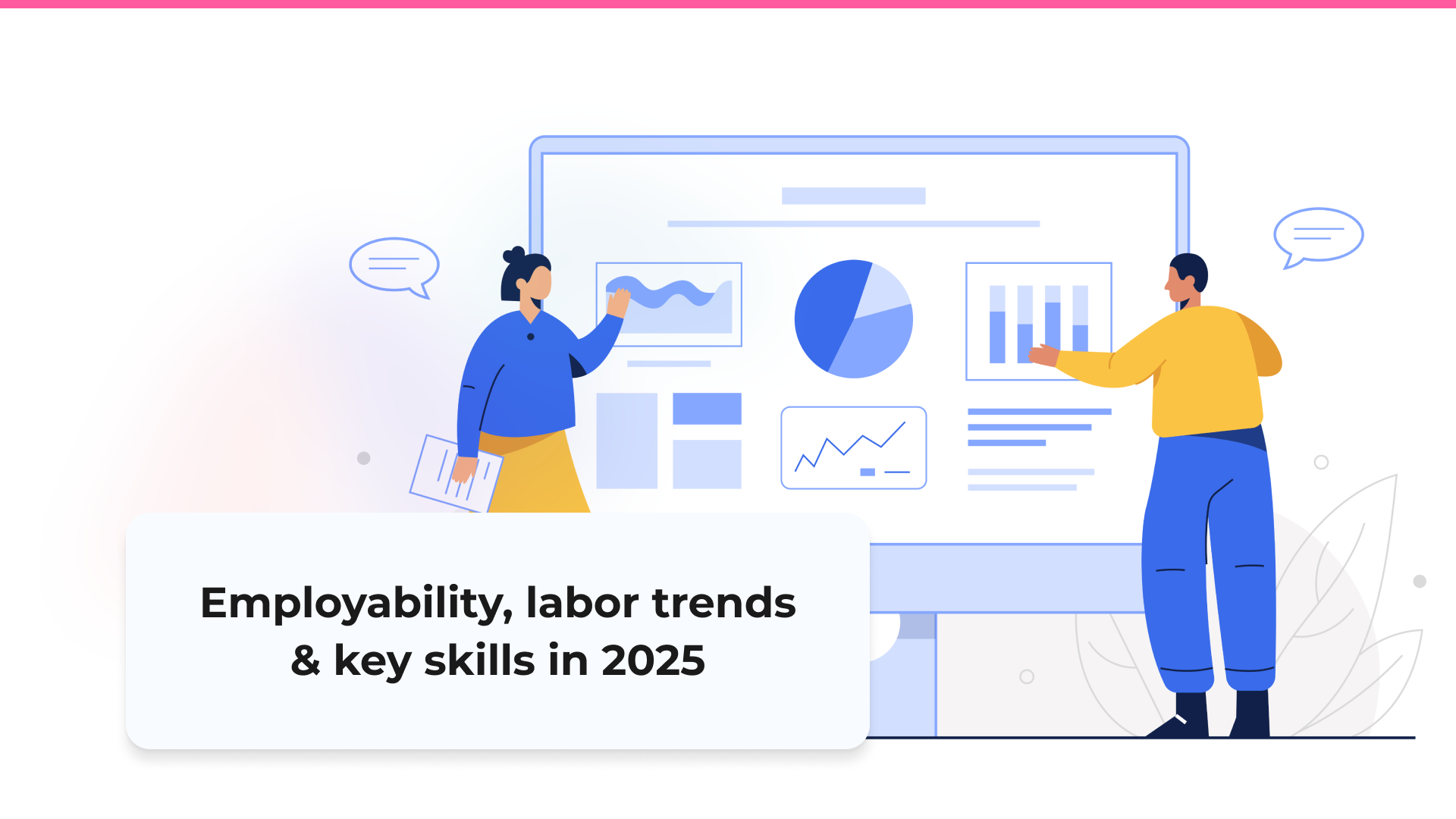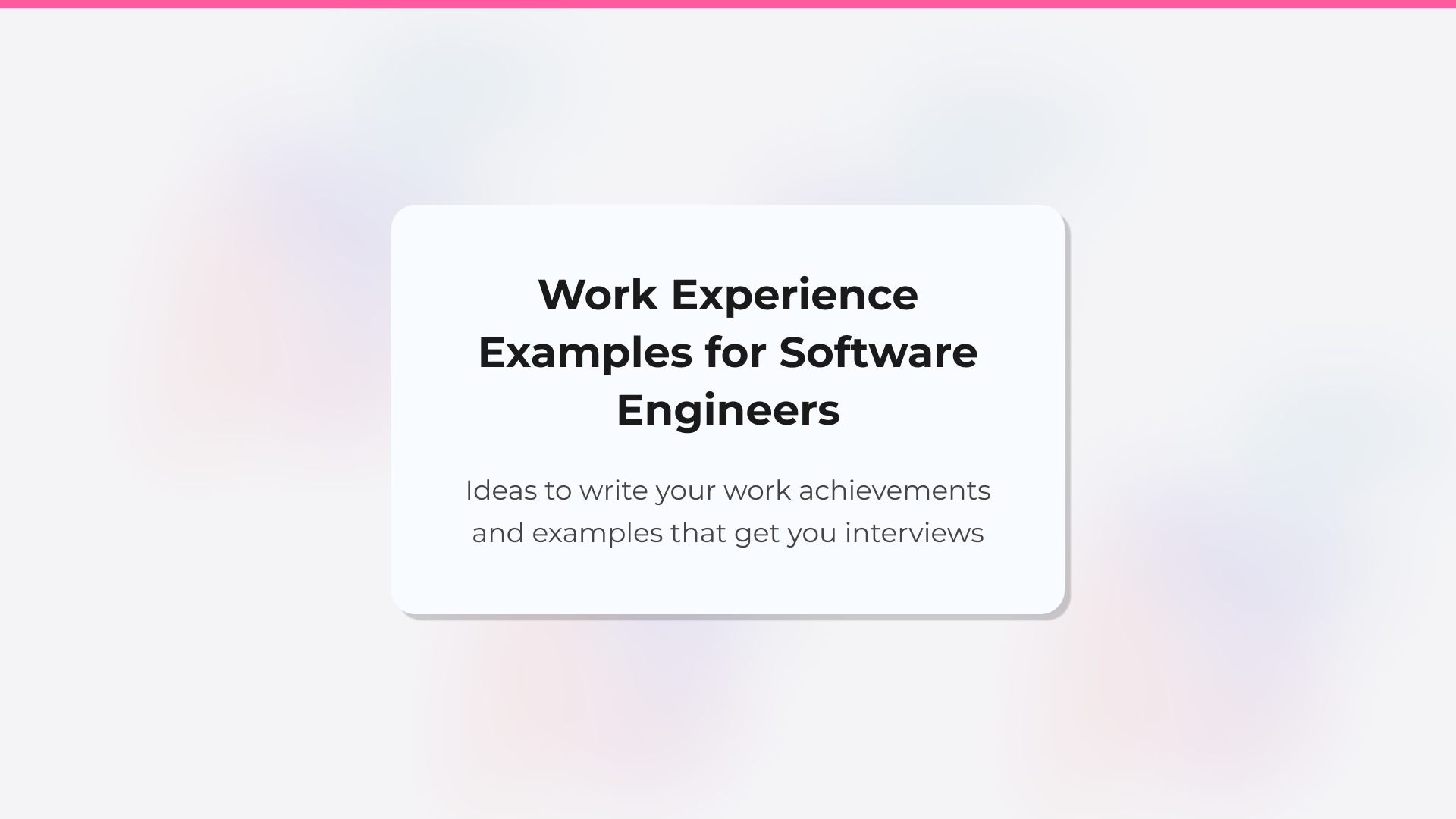
Software engineer resume: work experience and achievements examples
Your resume is the story of how you used technologies to solve real problems. You might be great with React, Kubernetes, or Python. But if your work experience section doesn’t show how you applied those skills in real situations, you’re only competing on technical knowledge, and that’s not always enough.
In the guide on how to write the work experience section of your resume, I go into detail about how to highlight your achievements, but if you’re a software engineer, you’ll find tailored examples just for you here.
In this guide, you’ll learn:
- How to write high-impact technical accomplishments (even without hard metrics).
- How to show your real value as a developer, even if you don’t have years of experience.
- How to tailor your experience for different types of companies and roles.
- How to beat ATS filters with clarity, context, and the right keywords.
Why work experience is the most powerful part of your resume
In software development, knowing how to code is just the beginning. What sets you apart is your ability to apply that knowledge and deliver value in real-world settings.
When a recruiter or hiring manager reads your resume, they’re asking:
- What have you built, improved, or maintained? → Does it look like what they’re building?
- What problems did you solve and what was the impact? → Have you faced the kind of challenges they face?
- What was the context? → Team setup, business goals, tech stack, constraints.
- Are you growing and staying current? → Or are you stuck doing the same thing?
A generic resume that lists tools or vague responsibilities might be technically accurate, but it doesn’t say much about you, what drives your work, or what changes when you’re on a team. It’s forgettable. But a resume that clearly shows your technical impact, in context, is the one that makes it to the shortlist. The one that gets callbacks.
How to write technical achievements that stand out (even without metrics)
As a software engineer, you need to tell a clear, compelling story about how you solved real problems, using language that both companies and applicant tracking systems (ATS) understand.
Let’s look at how to turn generic statements into achievements that actually get interviews.
❌ Mistake #1: Listing technologies without context
This kind of resume entry:
Python, Flask, PostgreSQL, Git, Docker
…tells the recruiter nothing.
No project, no result, no context. Just a bunch of tools.
Now compare it to this:
Backend Developer
SaaS 360 | Jan 2023 – Present | Tech: Python, Flask, PostgreSQL
- Built a RESTful API for a B2B CRM platform, reducing response times by 35%.
- Optimized complex SQL queries, improving dashboard performance with over 10K records.
Now we see: the product (B2B CRM), the specific actions (built, optimized), the impact (faster, more efficient), and the stack used.
❌ Mistake #2: Using vague phrases like “built features” or “fixed bugs”
These don’t communicate the value of your work.
Use this formula to craft stronger statements:
[Technical verb] + [What you did] + [Impact/result] + [Context]
Frontend example:
- Rebuilt the search component using React and Algolia, improving load speed by 50% and increasing user conversion by 12%.
Backend example:
- Implemented a background job system with RabbitMQ to process events asynchronously, enabling the service to scale without bottlenecks.
One sentence, but it communicates a lot: technical depth, performance awareness, business context, and clarity.
❌ Mistake #3: Getting stuck if you don’t have exact numbers
Sometimes you just don’t have access to specific metrics. That’s no excuse to leave out impact.
Next, we’ll show you how to write qualitative, credible, and concrete achievements that still get attention even without hard data.
How to show impact without metrics (with real examples)
You don’t always have data like “increased conversion by 18%” or “reduced load time from 3s to 1.5s.” That’s okay, there are other powerful ways to demonstrate impact.
1. Describe visible, qualitative improvements
Sometimes impact isn’t tracked, but it’s felt. If you improved something noticeable for users or teammates, say it clearly.
Example:
- Redesigned the onboarding flow for new users by simplifying forms and validations. The support team reported fewer tickets related to that process.
👉 Why it works: Shows real user impact, even without a number.
2. Explain how you solved a specific technical challenge
Solving complex issues still shows your value.
Example:
- Integrated a payment gateway that didn’t offer a Node.js SDK. Built a full integration from scratch using its REST API, handling token validation, callbacks, and localized error messages across multiple countries.
👉 Why it works: Demonstrates technical ownership, creativity, and problem-solving.
3. Use impact-driven language
Words like “noticeably,” “significantly,” or “substantially” can highlight impact (if used carefully).
Example:
- Simplified the backend logging system, significantly reducing the time developers spent debugging issues in staging.
👉 Why it works: There’s no metric, but the benefit is crystal clear.
4. Show how you improved processes
Not all impact is technical. If you made something more efficient or easier to maintain, that’s valuable too.
Example:
- Documented the team’s technical onboarding process, reducing ramp-up time for new engineers. Before, they needed constant support — now they contribute independently within a week.
👉 Why it works: Signals scalability, team maturity, and continuous improvement.
5. Highlight when your work was reused or adopted by other teams
If something you built was reused across products or teams, that speaks volumes about quality.
Example:
- Created a reusable form validation library. It was adopted across three different products, reducing code duplication.
👉 Why it works: Shows your impact scaled beyond your immediate scope. Your code lasts.
6. Keep a personal log of your technical wins
A lot of the value you create gets forgotten if you don’t track it. Get in the habit of documenting what you build, fix, and improve. Any positive feedback you receive also works well.
Personal log example:
“Today I fixed intermittent failures in E2E tests. The issue was a misconfigured mock in Cypress. I rewrote it and stabilized the suite.”
→ On your resume:
- Resolved flaky E2E test failures by fixing a faulty Cypress mock, stabilizing test runs in the staging environment.
👉 Why it works: Turns everyday work into clear accomplishments. It’s your technical track record.
The ultimate structure for writing strong technical achievements
For each work experience entry on your resume, try to include these four elements.
You don’t need to hit all of them in every bullet point, but they should appear throughout the section.
-
Brief product or team context
What did the company or app do? What problem did it solve? At what scale?
-
Your specific contribution
What did you implement, fix, refactor, or design?
-
The tools or technologies you used
What stack did you work with? What did you master or learn?
-
The impact of your work (even if qualitative)
Did you speed something up? Enable teammates? Reduce errors? Improve UX?
When you combine these practices with clear, strategic writing, your resume becomes a professional story that sets you apart and gets interviews.
Work experience examples by Developer Level
Junior / Entry-level
At this stage, you’re expected to show that you can learn fast, collaborate effectively, and deliver high-quality technical work, even if others still lead the context.
Examples:
- Built an authentication system using Firebase and React, following recommended security practices. Used by 2K+ users in an e-commerce MVP.
- Worked with the QA team to automate 30 tests in Cypress, reducing errors in staging.
- Developed reusable components with Vue.js and Tailwind for a corporate e-learning portal, improving visual consistency.
- Refactored legacy PHP functions to improve code readability at an insurance company.
If you’re in an internship, highlight your initiative and any project where you solved something without constant help.
Mid-level
At this level, you’re expected to solve problems independently, improve technical structure, and think in terms of scalability and maintainability.
Examples:
- Designed and implemented a microservices architecture using NestJS and RabbitMQ, improving system scalability for bookings by 40%.
- Optimized image loading with Cloudinary, reducing mobile LCP from 5.3s to 2.1s.
- Introduced Git Flow and led internal training sessions, reducing merge conflicts for an 8-person team.
- Adapted a retail website to meet WCAG AA accessibility standards, collaborating with UX and legal teams.
- Led development of an internal HR platform used by 700+ employees, integrating role-based permissions and SSO.
Start showing ownership of full features and your ability to collaborate with non-technical roles (product, design, legal, business).
Senior / Tech Lead
At this level, your impact goes beyond code. You’re expected to multiply your team’s output, make architectural decisions, and raise the overall quality bar.
Examples:
- Led the migration of a Laravel monolith to Go microservices deployed on Kubernetes, reducing dev time by 30%.
- Mentored 4 junior developers and established coding standards, cutting production bugs by 50%.
- Negotiated technical debt prioritization with business stakeholders at an energy consultancy, planning a 3-phase legacy refactor.
- Redesigned the order management system for a global food company, reducing mean time to recovery (MTTR) by 60%.
- Participated in the cross-team architecture committee, defining REST API and data validation guidelines across 7 distributed teams.
Explain why you made certain decisions, how it impacted the team or business, and how you influenced others.
Work experience examples for software engineers by Type of Company
Every company expects different things from your developer role. Here are realistic examples based on company type:
Startups
They expect you to be fast, versatile, and able to deliver value with minimal oversight.
Examples:
- Designed and built the entire stack for a booking app (React Native + Node.js + PostgreSQL) in under 6 weeks.
- Set up Stripe payments and automated invoicing with Make, enabling MVP launch without a full backend.
- Rebuilt the frontend in Next.js with server-side rendering to improve SEO, doubling organic traffic in one month.
- Deployed the first CI/CD pipeline using GitHub Actions, scaling from 1 to 4 weekly releases.
Scaleups
They look for technical robustness, scalability, process improvements, and business awareness.
Examples:
- Automated CI/CD pipelines with CircleCI across 12 repos, boosting release frequency by 80%.
- Coordinated integrations with Salesforce, Segment, and SendGrid in a B2B SaaS platform with 200K+ users.
- Proposed and implemented GraphQL API versioning strategy to prevent breaking changes across 3 interconnected products.
- Rolled out feature flags with LaunchDarkly to safely release features to targeted segments.
Traditional Corporations / Non-digital Industry
They value rigor, process orientation, and the ability to improve complex systems.
Examples:
- Digitized internal logistics processes at a manufacturing firm by building a custom web app with .NET and Angular.
- Automated Excel reporting using Python and macros, saving the finance team over 20 hours/month.
- Rewrote a legacy Visual Basic app in C#, maintaining ERP compatibility.
- Built a quality control system for a factory floor, using IoT sensors and a React dashboard for real-time monitoring.
Tech Consulting
They care about your ability to adapt, communicate with clients, and deliver on deadlines.
Examples:
- Delivered an e-invoicing system for a legal client, meeting strict tax compliance requirements under tight deadlines.
- Managed a 3-dev team to build a SharePoint intranet for a pharmaceutical company.
- Translated non-technical client requirements into technical specs for the backend team.
- Reduced deployment time for e-commerce projects by building configurable Shopify Plus templates.
Banking, Insurance & Regulated Industries
They prioritize compliance, traceability, security, and reliability.
Examples:
- Documented 30+ REST endpoints using OpenAPI to meet data protection standards in a financial environment.
- Built structured logging with Elasticsearch + Kibana for real-time auditing of operations.
- Designed a customer scoring system with Python and pandas, audited by the risk department.
- Adapted an Angular app to meet both accessibility and security standards, aligning with OWASP Top 10.
If the recruiter doesn’t know your sector or company, briefly explain it in one line at the start of your experience.
Examples of how to write work experience on your software engineer resume by Role
Frontend Developer
- Redesigned the design system of an e-commerce platform using Storybook and Tailwind, speeding up interface development by 40%.
- Migrated a SPA from AngularJS to React with TypeScript, reducing tech debt and improving code maintainability.
- Implemented SSR with Next.js and optimized Core Web Vitals, boosting SEO and lowering bounce rate by 18%.
- Collaborated with UX and product to launch a new onboarding feature that increased activation rate by 25%.
- Added full accessibility support (WCAG AA) to the frontend of a public-facing government website.
Backend Developer
- Designed and built a REST API in Node.js and Express that handles over 20K daily requests with JWT authentication.
- Replaced inefficient SQL queries in PostgreSQL, cutting response time of a critical endpoint from 1.4s to 160ms.
- Refactored a payments microservice in Java Spring Boot, doubling reliability in production (from 99.1% to 99.9%).
- Implemented event queues with RabbitMQ to decouple billing and notification processes.
- Designed backup and disaster recovery policies for a document management platform in the healthcare sector.
QA / Testing Engineer
- Automated 150+ functional tests with Cypress for a fleet management platform, reducing bugs in staging by 60%.
- Defined and documented a testing plan for ISO 27001 certification at a financial company.
- Implemented end-to-end testing with Playwright integrated into CI/CD, cutting pre-deployment validation time.
- Collaborated with the product team to define clear acceptance criteria at a tech consultancy.
- Built mocks and test environments to simulate external API behavior in a logistics app.
DevOps / Infrastructure Engineer
- Automated CI/CD pipelines with GitLab for 20+ microservices.
- Migrated infrastructure to Terraform and Helm Charts in a multi-region setup on AWS EKS.
- Set up alerts using Prometheus and Grafana, improving proactive error detection in production.
- Cut monthly cloud costs by 30% by optimizing instances and autoscaling policies on GCP.
- Defined secrets management processes with Vault to meet security standards at an insurance company.
Data Engineer
- Built ETL pipelines using Airflow and Spark to process transaction data from over 1M users.
- Designed a BigQuery data model for a financial dashboard in Looker used by the C-level team.
- Optimized log ingestion processes, reducing load time from 4h to 25min in a legacy system.
- Automated data cleaning with Python and dbt for a retail consulting firm.
- Led the migration from an on-prem DWH to Snowflake, ensuring integrity and availability during the transition.
Machine Learning Engineer
- Trained a recommendation model with LightFM for a book app, boosting conversion rate by 15%.
- Built an automated training pipeline using MLflow, Docker, and AWS Sagemaker.
- Conducted exploratory analysis and cleaned a dataset of 10M+ records at a transportation company.
- Validated credit scoring models in collaboration with legal and risk teams at a digital bank.
- Built a ticket classifier for support centers using NLP and scikit-learn, increasing accuracy to 87%.
Engineering Manager / Tech Lead
- Scaled the engineering team from 5 to 12 people, redesigning onboarding and mentoring processes.
- Introduced technical OKRs and code quality metrics (coverage, bugs, feedback cycles) into the performance review process.
- Coordinated engineering and product teams to rewrite the billing system in 3 months with zero downtime.
- Took part in strategic architecture decisions and defined technical ownership across squads.
- Led the evaluation and migration to a new CI/CD tool for 40+ repositories at an urban mobility company.
Product Engineer / Business-Oriented Fullstack
- Worked closely with the sales team to build an analytics dashboard that reduced support tickets by 40%.
- Developed a feature allowing notification customization, increasing premium user retention by 12%.
- Integrated recurring payments and A/B testing with Stripe to experiment with new subscription plans.
- Proposed and led an onboarding flow redesign that improved activation rate from 23% to 37%.
- Actively participated in pricing and launch decisions, representing engineering in GTM planning.
Examples for Devs without professional experience
Even if you haven’t held a formal developer job yet, you may already have relevant experience. The key is explaining it well. Here are some examples by project type:
Personal Projects
Show initiative, technical skills, and your ability to learn independently.
- “Built a recipe app with Next.js and voice search. Implemented SSR and lazy loading to optimize mobile performance.”
- “Created a Spotify clone with Vue and Firebase to practice authentication, file uploads, and REST API integration.”
- “Built a chess stats site with D3.js and Lichess data. Focused on visualizing openings and trends.”
- “Automated personal expense reports with Python and the Notion API for personal use.”
Open-Source Contributions
Position you as collaborative, rigorous, and community-minded.
- “Contributed to the ViteJS CLI, fixing a routing parser bug. My PR was accepted after review by the core team.”
- “Helped translate Astro.build documentation into Spanish, improving accessibility for the LATAM community.”
- “Fixed a UI bug in the Chakra UI component library and added test cases using Jest.”
- “Moderated issues and reviewed pull requests for a public transit data scraping project in my city.”
Bootcamps / Practical Courses
Count as valid experience if you explain your role, technologies used, and what you achieved.
- “In a 12-week intensive bootcamp, built an e-learning platform in a team using Django and Vue.js. I handled the Stripe payment logic.”
- “Built a collaborative to-do app in React and Express as the final project. I was in charge of authentication and state management with Redux.”
- “Designed the backend of a weather app using Node and MongoDB, applying SOLID principles and testing with Jest.”
- “Took part in a coding challenge where we built a donation app for nonprofits using Flutter. We received an honorable mention for UX.”
Your work experience is more powerful than you think
Many devs underestimate their experience because it didn’t come from a famous tech company or lacks big numbers. But what really matters is how you tell your story:
- With technical clarity.
- With focus on impact (even without hard metrics).
- In language that fits the type of company.
- And in a format compatible with humans and ATS.
It’s about uncovering the real value in your journey and expressing it smartly.
We're two product builders who care about quality, taste and doing things right. We want you to get that job you want, plain and simple. That's why we are building CandyCV to help you create a great resume and land a job for free. If you give us a try (and feedback!), we'll be forever grateful 😊
Alba Hornero
Co-founder and Product Builder
As CandyCV’s co-founder and a former product lead in HR tech, I’ve built ATS tools, optimized hiring processes, and interviewed hundreds of recruiters. I personally write every post with the intention to provide real, high-impact job search advice that truly helps you land your next role.
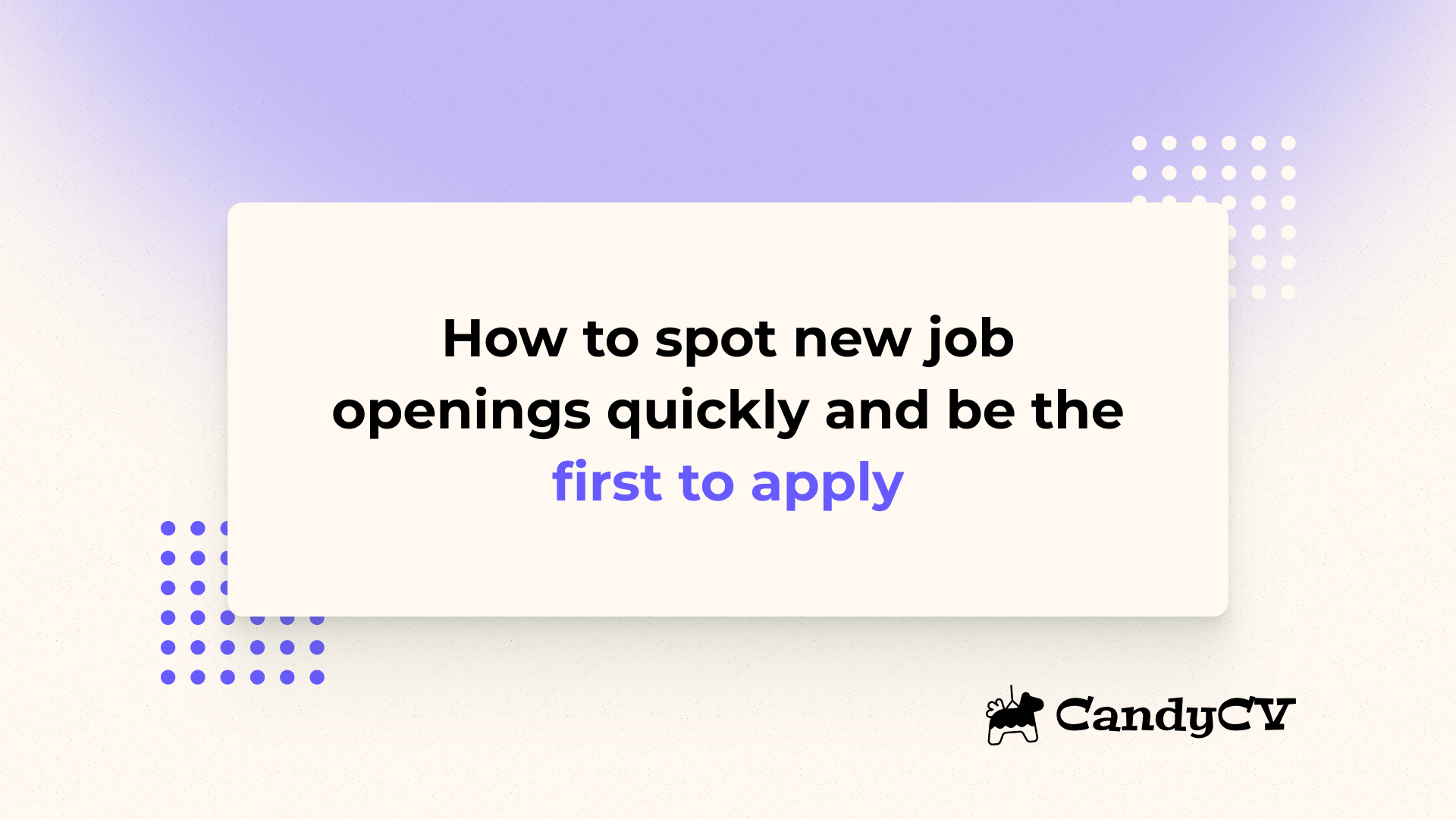
How to spot new job openings quickly and be the first to apply
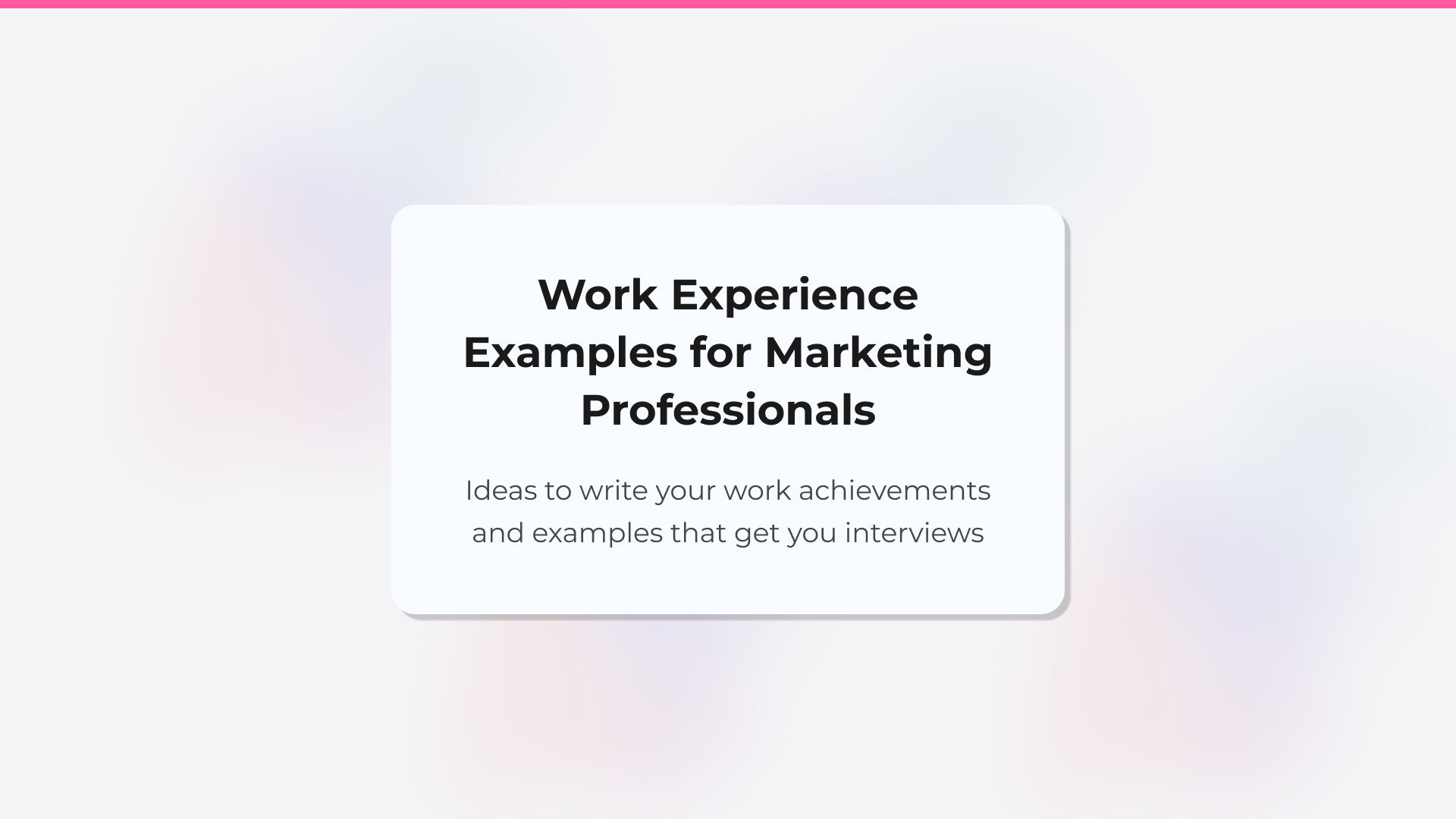
Examples of how to describe your work experience in a Digital Marketing resume
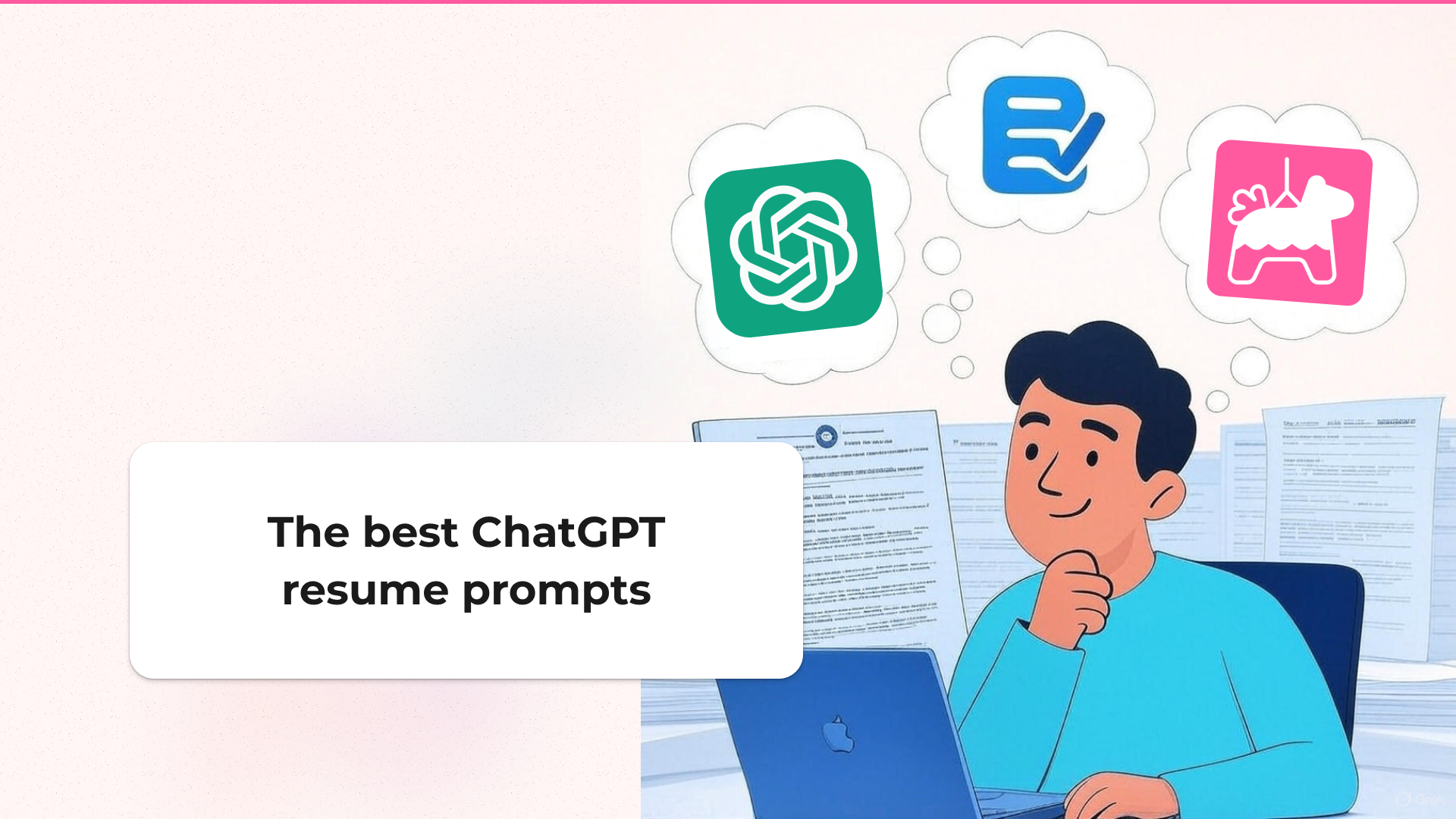
Best 3 ChatGPT prompts for your resume: use AI to get the job you want
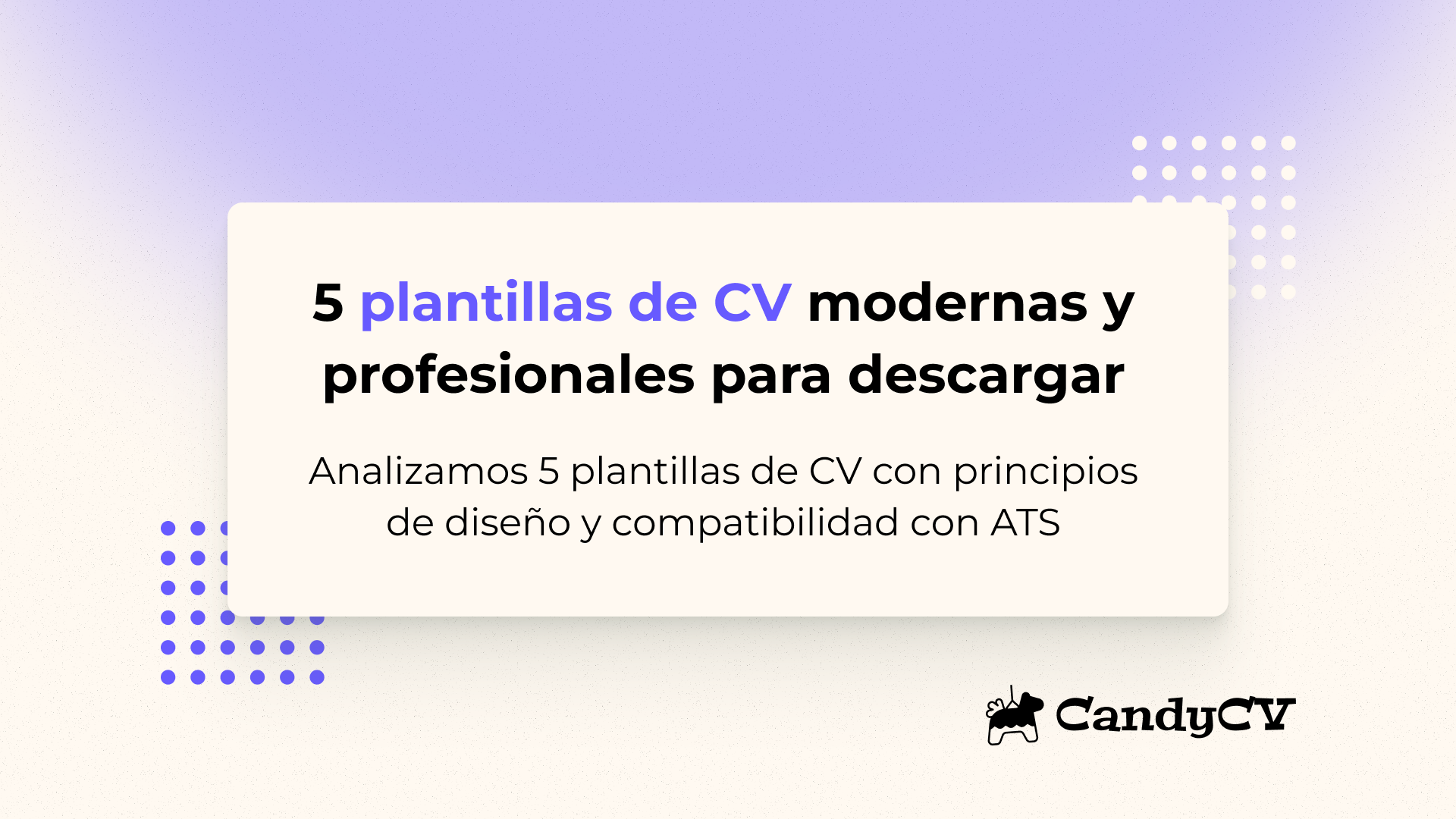
Download 5 free modern and ATS-friendly resume templates (design analysis)
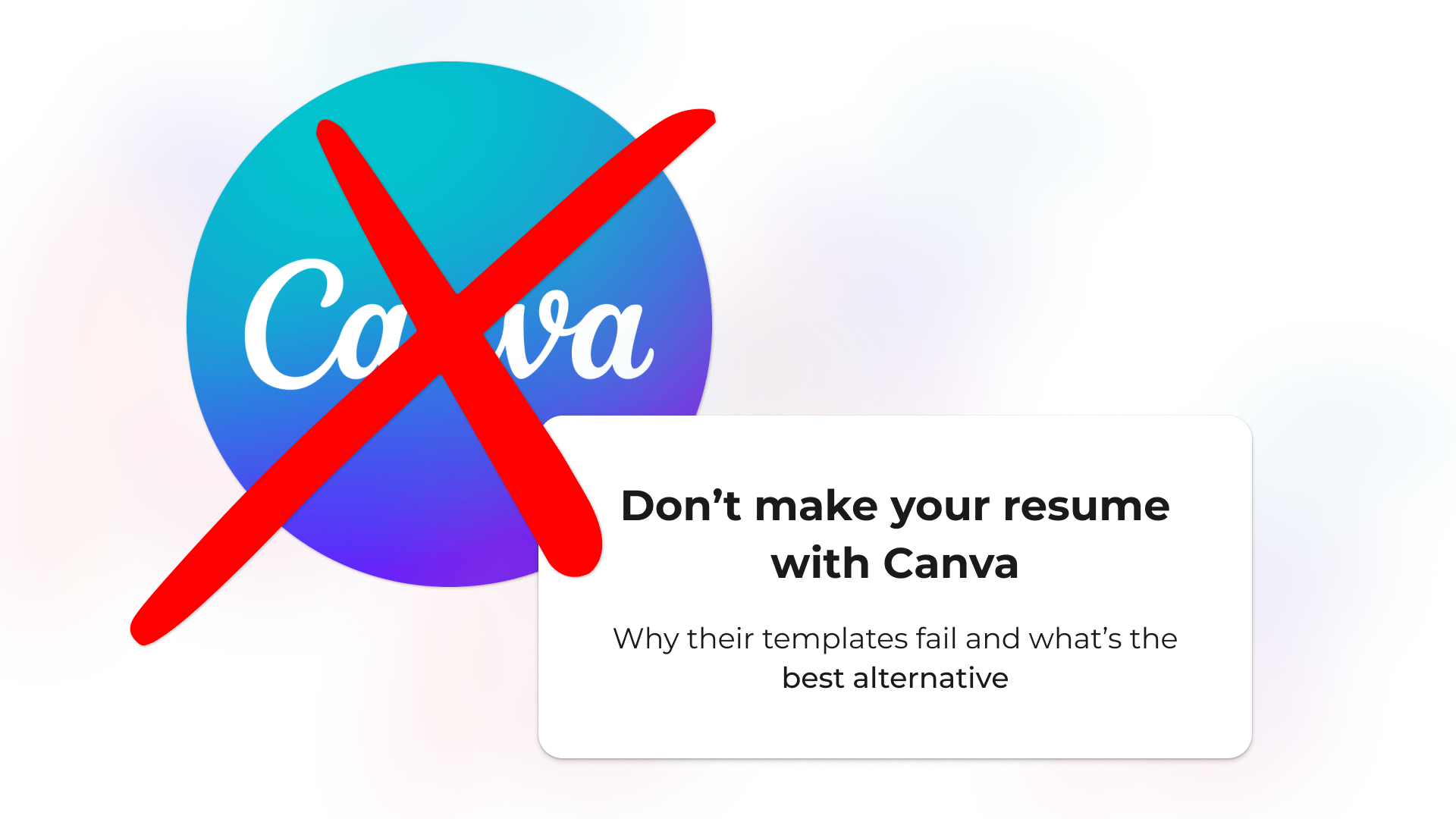
Don’t make your resume with Canva: why its templates fail and what to use instead
